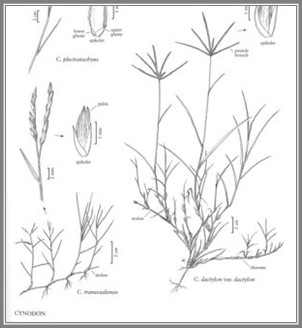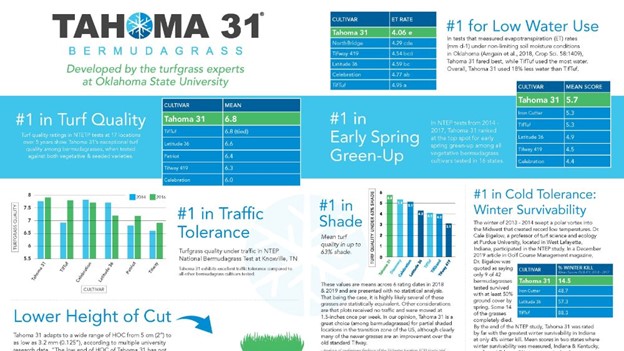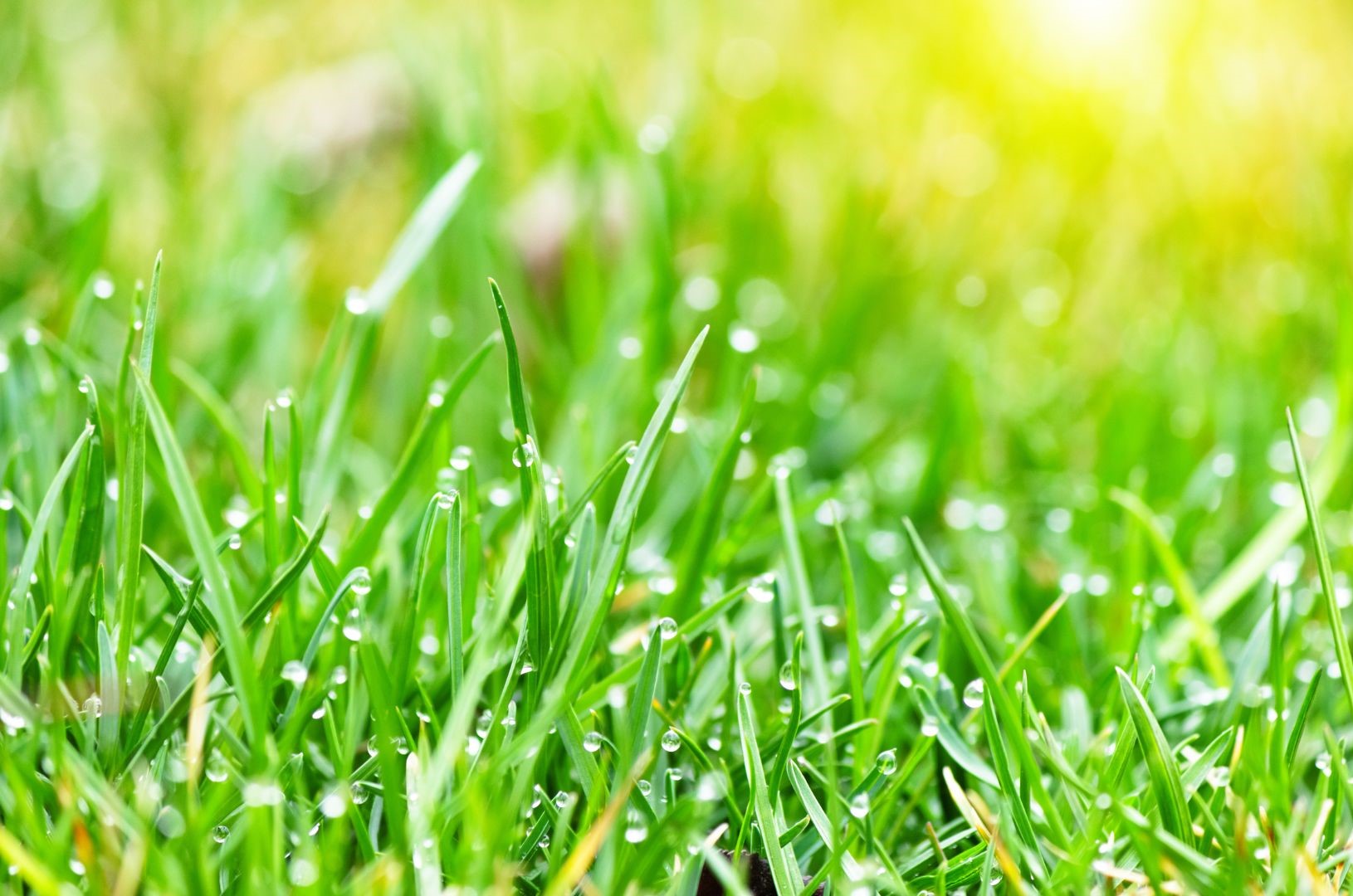Genetic Diversity and Modification in Turfgrass
Exploring the Influence on Tahoma 31 Bermudagrass
What is Turfgrass?
Turfgrass is a narrow-leaved, low-growing ground cover with an extensive fibrous root system. This plant covers the land surface and tolerates traffic and defoliation. About 50 species of grasses fit this definition. Turfgrass provides environmental, societal, and economic benefits. These benefits are why turf is planted and utilized in many places (Christians et al., 2017). The turfgrass selection is usually based on the species and cultivars’ ability to thrive under the climatic conditions in each area (Fry & Huang, 2004).
Zones where turfgrasses are grown are grouped as cool-humid (Northeast, part of the Midwest and Pacific Northwest), cool-arid (dried areas of the Midwest and West), warm-humid (Southeast and eastern Texas), warm-arid (Western Texas and Southern California), and transition zone (this extends from the central part of the country through parts of the other four primary climatic zones) (Christian et al., 2017). Generally, turfgrasses are grouped into:
- Cool Season Grasses and
- Warm Season Grasses
Cool season grasses:
Also referred to as C3 grasses because of their three-carbon compound. These plants are best adapted to the cooler temperatures/times of the year, especially in the cool, humid zone with temperatures ranging from 64 to 24°C (or 75 °F) with root growth prolific to 10-17.7°C (or 50 and 64 °F )(Fry & Huang, 2004). These grasses rapidly grow in the spring from dormancy and can be intolerant to summer stress; therefore, growth is slowed in midsummer, especially when it is not irrigated (Christian et al., 2017). Examples are Bluegrass, Ryegrass, Bentgrass, Tall fescue, and Fine fescue.
Warm season grasses: Also referred to as C4 grasses because of their four-carbon compound, they are adapted to warmer temperatures ranging from 26.6-35°C (or 80 to 95 °F), especially in warm, arid zones. They emerge from dormancy slower and do not reach their maximum growth until midsummer. These grasses go into dormancy when the soil temperature falls below 10°C (or 50 °F). They remain brown until spring as they go dormant following frost or sustained temperatures below 10°C (or 50 °F). Examples are Bermudagrass, Zoysiagrass, Buffalograss, St. Agustinegrass, Bahiagrass, Seashore paspalum, and Centipedegrass.
Fig 1: Turfgrass groupings. Source: stock images
Genetic Diversity in Turfgrass
Genetic diversity is the heritable variation within and among populations; it is the key pillar of biodiversity within and between species and their ecosystems. Understanding its genetic assortment is very important (Verma et al., 2017). This diversity allows plant breeders to develop new and improved cultivars with desirable characteristics (Govindaraj et al., 2015).
Modifying turfgrass genetically
A study by Cors (2022) discussed how turfgrass can be genetically modified. In this study, Cors mentioned the multiple methods for creating genetically modified organisms with bacteria by transforming the bacterium E. coli. However, this approach does not apply to turf because of the rigid cell wall they possess, which prevents the formation of small pores required for DNA entry. Using Agrobacterium, a simple transformation like E. coli can be done by inserting a Ti-plasmid (DNA transfection vector). The Agrobacterium infects the plant cell, thereby facilitating the insertion of a portion of the Ti-plasmid known as T-DNA into the nucleus of the plant cell, which eventually affects the desired genetic alteration (Cors, 2022). Targeting the embryonic cells, especially the meristem, is essential for a successful genetic transformation.
However, this review will be based on bermudagrass and its recent highly utilized cultivar – Tahoma 31, which was released in 2017 by the Oklahoma State University turf breeders. Tahoma 31 was used in the Super Bowl LVII in 2023.
Bermudagrass:
This species of warm season is adapted to the lower elevations of southern Kansas. This stoloniferous grass comprises nine species with chromosomal numbers ranging from 18 to 54 (McCarty & Miller 2002). Common bermudagrass (Cynodon dactylon (L.) Pers. (2n=4x=36 and 6x=54), African bermudagrass (C. transvaalensis Burtt Davy (2n=2x=18)) and hybrid bermudagrass (C.dactylon X C. transvaalensis (2n=3x=27 and 4x=36) are used in turf in Kansas and other warm climates across the world (Godwin et al., 2022) The common bermudagrass has 36 chromosomes and produces pollen and seed except Tifton 10. The triploid hybrids (C. dactylon X C. transvaalensis) have chromosomes and are male and female sterile (McCarty & Miller, 2002).
Bermudagrass has been widely accepted for use in putting greens in the transition zone, and many golf courses are converting from cool-season grass to creeping bentgrass. The characteristics of this grass include its large range of genetic diversity and wide adaptation to various environments (Taliaferro, 1995). It is an excellent drought-resistance and heat-tolerance species. It has traffic tolerance and exceptional recovery potential. It is adapted to various mowing heights. It is easy to manage and resistant to biotic and abiotic stress (Wang et al., 2010). Bermudagrass has excellent salt tolerance and lateral stems and is competitive against weeds (McCarty & Miller, 2002).
Hybrid bermudagrass may help superintendents pay more attention to improving the green’s playability than to its survival during summer months coinciding with the peak season of golfer play (Hartwiger, 2009). One of the greatest concerns of hybrid bermudagrass is its susceptibility to winter injury. Although there are protective covers that could be used to reduce winter injury, there are significantly high labor costs associated with covering and uncovering (White, 2011). Ultradwarf bermudagrass are low-growing hybrids used on golf course greens because of their close mowing tolerance (Juska & Hanson, 1964). Studies have reported a narrow genetic diversity among ultra-dwarf bermudagrasses which could be a reason for their prevalent diseases (Wang et al., 2010; Fang et al., 2017). This brings about the need for new hybrid bermudagrass genotypes with wider genetic diversity and tolerance to cold.
Fig. 2: Genetic Diversity of Bermudagrass. Source: Floral of North America
Main: Tahoma 31
OKC 1131 is clonally propagated interspecific triploid hybrid (2n=3x=27) by crossing Cynodon dactylon var. dactylon accession A12268 (2n=4x=36) x C. transvaalensis OSU selection 2747 (2n=2x=18). OKC 1131, now named Tahoma 31, is an asexually reproduced interspecific bermudagrass turf. It was developed by planting clonal plants of the two parents within close distance in a small crossing plot. Tahoma 31 Bermudagrass is known for its improved cold-hardiness and improved drought resistance. This genotype was bred from two cold, hardy, drought-resistant plants found in the most extreme landscapes on the planet. Tahoma 31 has consistently shown the lowest ET rates among other genotypes including celebration, tiftuf, tifway, and latitude 36. Low ET rates are desired and indicative of more efficient water use. By tolerating drought, this newly developed genotype can grow an extensive, deep root system that can avoid drought. It has also been tested to be the best for salt tolerance among 10 experimental Bermuda grasses. With its dark green fine texture and high turf density, Tahoma 31 withstands freezing temperatures better and greens up faster in the spring. Its ability to heal quickly from damage and sports-related wear has made it to be widely acceptable in sports turf. Tahoma 31 has demonstrated its ability to tolerate low mowing heights and suitability under certain maintenance practices, making it an important grass on public or municipal golf course greens.
Fig. 3: Why Tahoma 31 is chosen for the Superbowl ’23. Source: https://tahoma31.com/research/
Comparative Performance and Strength
Tahoma 31 has exhibited exceptional winter survivability, high levels of drought resistance, and wide adaptation. It has shown excellent establishment characteristics, fine texture, high turf density, early green up, dark green color, and sufficient sod tensile strength for reliable commercial production.

Fig. 4: Comparison of Tahoma 31 with other cultivars’ quality. Source: Tahoma 31/research.

Fig. 5: Comparison of Tahoma 31 with other cultivars’ winter injury rate. Source: Tahoma 31/research.

Fig. 6: Comparison of Tahoma 31 with other cultivars’ ET rate.Source: Tahoma 31/research.
References
- Christians, N. E., Patton, A. J. and Law, Q. D. 2017. Fundamentals of turfgrass management, Published by John Wiley & Sons, Inc.
- Fang, T., Y. Q. Wu, J. Q. Moss, N. R. Walker, and D. L. Martin. 2017.Genetic diversity of greens-type bermudagrass genotypes as assessed with simple sequence repeat markers. Intl. Turfgrass Soc. Res. J.13:1–8. https://doi.org/10.2134/itsrj2016.05.0435.
- Fry, J., Huang B. 2004. Applied turfgrass science and physiology, published by John Wiley
- Godwin C, Fang T, Wu Y. 2022. Genetic identity and diversity among experimental selections and cultivars of vegetatively propagated turf bermudagrass as assessed with SSR markers. Int Turfgrass Soc Res J. 2022; 14:632–641.https://doi.org/10.1002/its2.29
- Govindaraj, M., Vetriventhan, M. & Srinivasan, M. 2015. Importance of genetic diversity assessment in crop plants and its recent advances: an overview of its analytical perspectives. Genet. Res. Int. 2015, 1–14.
- Hartwiger, C. 2009. The heat is on: The first decade of the 21st century has seen ultradwarf bermudagrass varieties replacing bentgrass on putting greens in the Southeast. USGA Green Sect. Rec. 47(2):1–7.
- Juska, F. V. and A. A. Hanson. 1964. Evaluation of bermudagrass varieties for general-purpose turf. Agricultural Handbook No. 270. ARS/ USDA, Washington, DC.
- LochD.S., PoulterR.E., RocheM.B., CarsonC.J., LessT.W., O’BrienL. and DurantC.R. 2006. Amenity grasses for salt-affected parks in coastal Australia. Final Proj. Rep. TU02005. Horitculture Australia, Sydney, NSW.
- McCarty, B. 2003. Selecting a lawngrass. In B. McCarty (ed.) Southern lawns. Clemson Univ. Public Serv. Publ. Clemson Univ. Clemson, SC.
- Taliaferro, C. M. (1995). Diversity and vulnerability of Bermuda turfgrass species. Crop Science,35, 327–332.https://doi.org/10.2135/cropsci1995.0011183X003500020006x.
- Verma KS, Haq S, Kachhwaha S, Kothari SL. 2017. RAPD and ISSR marker assessment of genetic diversity in Citrullus colocynthis (L.) Schrad: a unique source of germplasm highly adapted to drought and high-temperature stress. 3 Biotech. 7(5):288.
- Wang, Z., Wu, Y. Q., Martin, D. L., Gao, H., Samuels, T., & Tan, C. C. (2010). Identification of vegetatively propagated turf bermudagrass cultivars using simple sequence repeat markers. Crop Science,50,2103 2111.https://doi.org/10.2135/cropsci2010.02.0116.
- White, B. 2011.Moving north with ultradwarf bermudagrass greens. Bul. Sports Surface Manage.255:35–37.
Further reading










































































